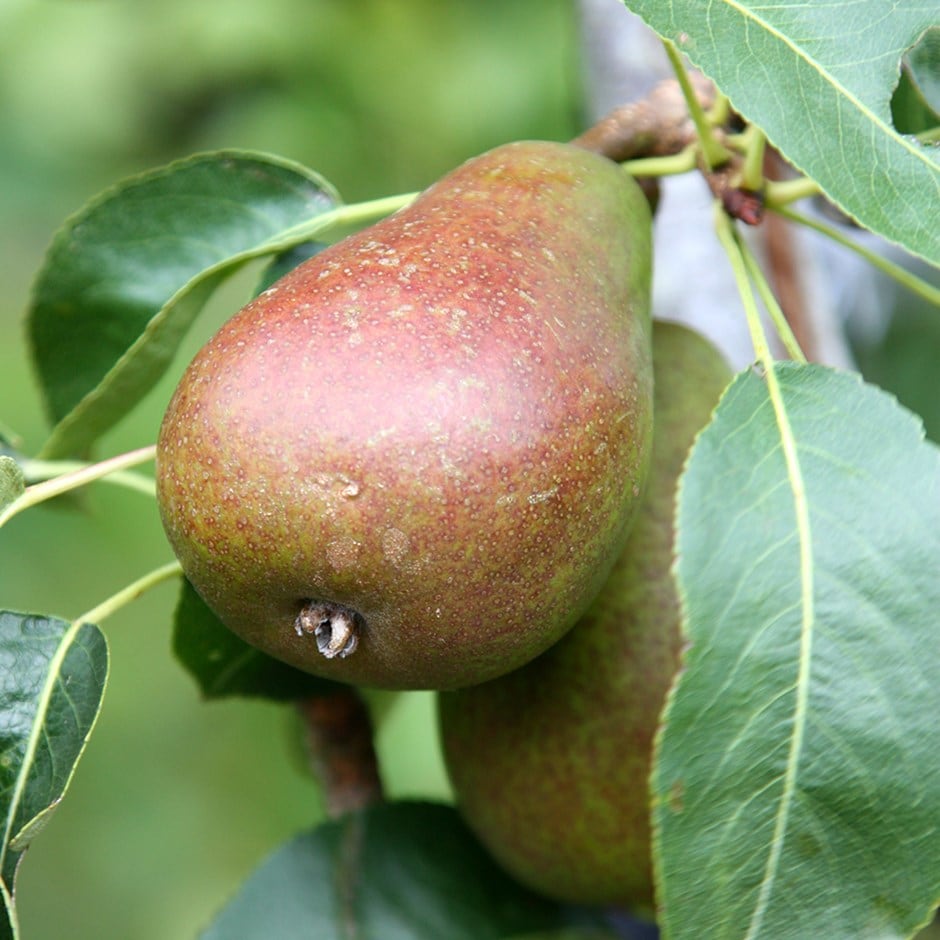pear 'Louise Bonne of Jersey'
pear ( syn. Pyrus communis 'Louise Bonne d'Avranchés' )
This plant is deciduous so it will lose all its leaves in autumn, then fresh new foliage appears again each spring.
- Position: full sun or partial shade
- Soil: moderately fertile, moist but well-drained soil
- Rate of growth: average
- Flowering period: April
- Hardiness: fully hardy
'Louise Bonne of Jersey' is a French variety with a rich, buttery, and juicy flavour, making it a delightful dessert pear. It consistently yields good crops, with fruits ready for harvest from October to November. This hardy tree exhibits some resistance to frost in its blossoms but can be vulnerable to scab so less suitable for wetter areas. Dating back to the early 18th century, this pear boasts medium-sized fruits that are pale green-yellow with a deep red flush. The flesh, tinged pink, is exceptionally smooth, juicy, and sweet.
Pollination information: Though partially self-fertile, this pear will produce a bigger crop if planted with another variety of pear. Ideally this should come from the same pollination group 2, however it is possible to use one from group 3 as well.
Pollination information: Though partially self-fertile, this pear will produce a bigger crop if planted with another variety of pear. Ideally this should come from the same pollination group 2, however it is possible to use one from group 3 as well.
When planting your pear tree, prepare a hole up to three times the diameter of its root system. Fork over the base of the pit in readiness, incorporating plenty of organic matter into the backfill and planting hole. Avoiding frozen and waterlogged soil, trees should be planted out as they arrive. If you've ordered a bare root tree, soak the roots in a bucket of water for half an hour prior to planting, or if this is not possible, they can be heeled in temporarily, covering their roots with soil, or potted up. In exposed positions, stake firmly and keep the base weed-free. Apply a balanced fertiliser in early spring to support growth and fruiting and provide regular watering during hot, dry spells. The main winter prune, avoiding frosty conditions, involves removing dead, dying, and diseased wood to create an open crown. Additionally, reduce leaders and laterals by a third to establish an airy structure without crisscrossing branches. In August, summer prune by shortening side shoots longer than 20cm (8”) back to three leaves, promoting fruit ripening and encouraging more fruit buds. Always ensure that the growth you trim feels firm to the touch. Pears naturally shed a small quantity of the developing fruits in mid summer. After this has occurred, thin out the remaining pears, leaving one pear per cluster.

